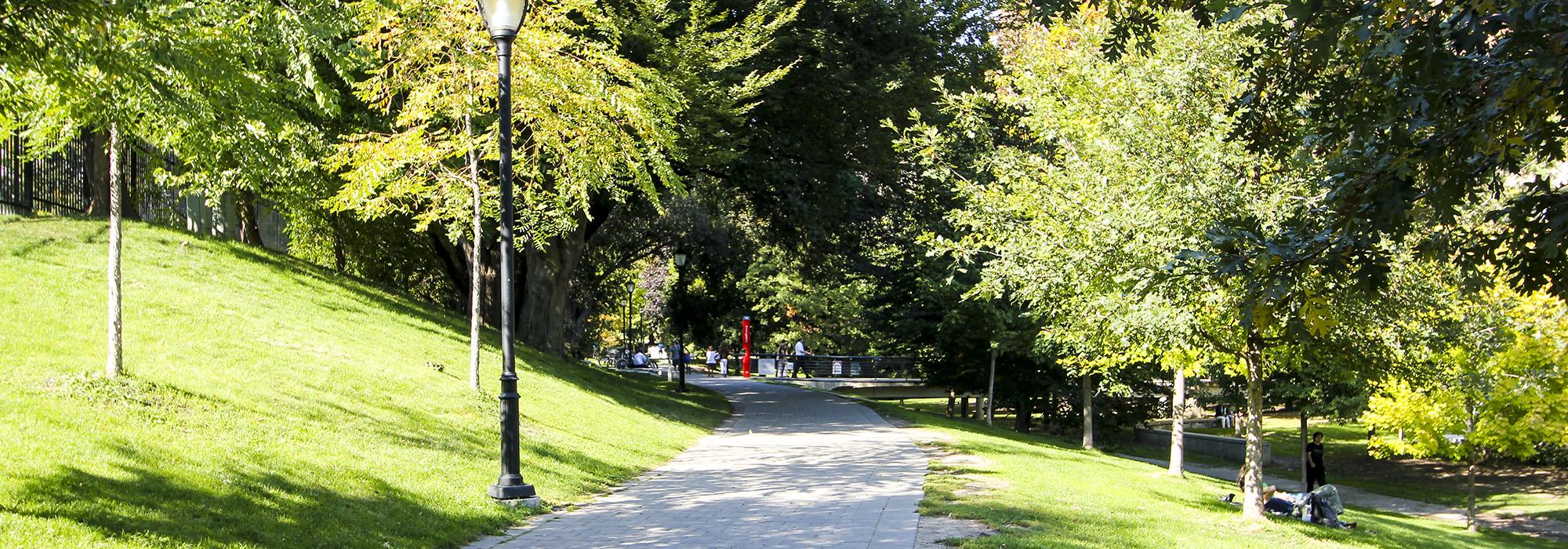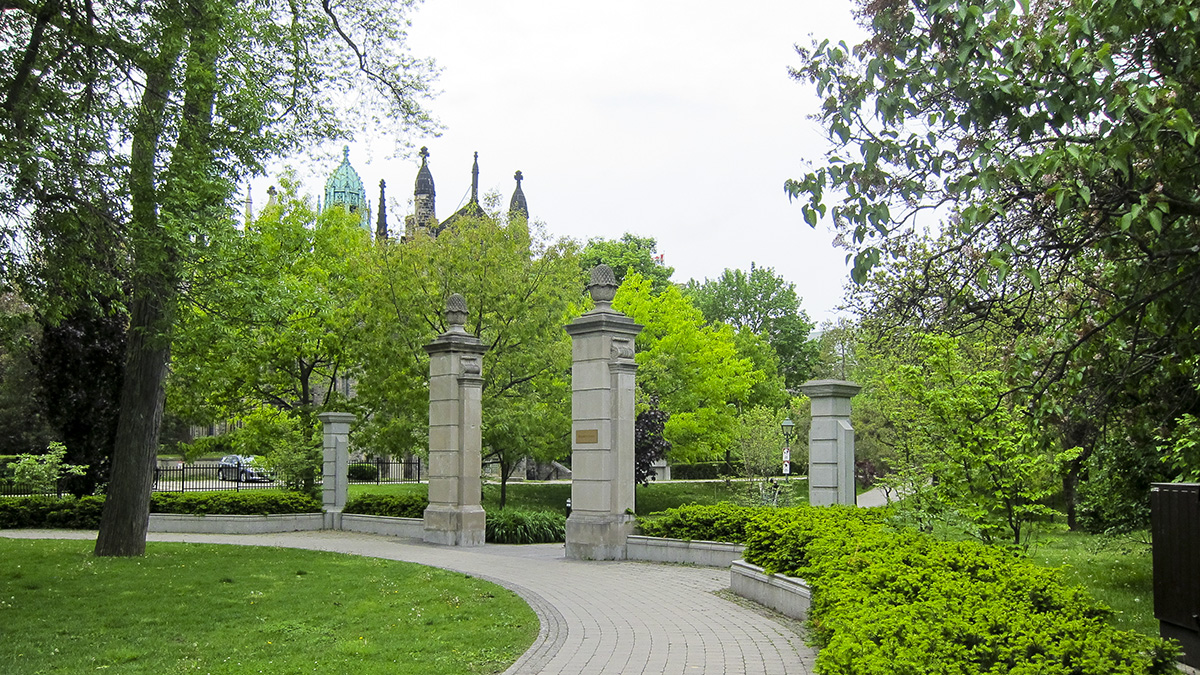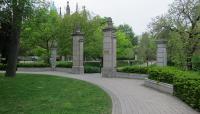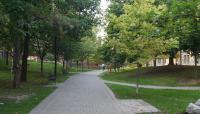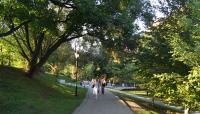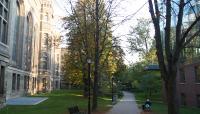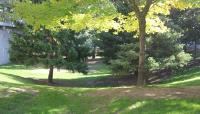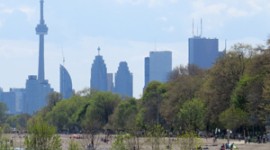Landscape Information
This paved walkway on the University of Toronto’s St. George Campus traces the winding course of Taddle Creek, which once flowed through the area. In 1859 the creek was dammed to create McCaul’s Pond and a botanical garden, before being buried in 1884 to serve as a sewer. Along Boor Street, the north entrance of the path is framed by the Queen Alexandra Gateway. Its stone pillars, with serpent-headed lampposts, were erected in 1906 at the corner of Bloor Street and Queen’s Park, but relocated to their current position, between the Royal Conservancy of Music and the Royal Ontario Museum, in 1962. Around that time, landscape architect Michael Hough re-designed the walk’s surroundings, recalling the historic character of the former Taddle Creek.
From the northern gateway, a ramp descends from a semi-circular apron to a wide cobblestone path, lined with lampposts and occasional recessed benches. Bordered by grassy banks and deep hollows planted with trees, the path undulates south past many academic buildings, including Trinity College, to which it gives access. Along the way, it is joined obliquely by other walkways from the east and west, and can thus be accessed from Queen’s Park Crescent. Mid-way along the route, where several paths converge, a small seating area (the Amphitheatre) faces east, and was built in 2010 using Wiarton limestone. In 1990 fourteen red oaks were planted along the path to memorialize the fourteen women killed in the Montreal Massacre in 1989, and in 2006 the Bennett Gates were erected at the southern terminus of the walk.



